|
Meet the Skoocum— |
|||
|
“The residence of the little town of Chesterfield, located in an isolated portion of Bannock County, Idaho, are greatly excited over the appearance in that vicinity of an eight-foot, hair-covered human monster. He was first seen on January 14, when he appeared among a party of young people, who were skating on the river near John Gooch’s ranch. The creature showed fight, and, flourishing a large club and uttering a series of yells, started to attack the skaters, who managed to reach their wagons and get away in safety. Measurements of the tracks show the creature’s feet to be 22 inches long and 7 inches broad, with the imprint of only four toes. Stockmen report having seen his tracks along the range west of the ringer. People in the neighborhood, feeling unsafe while the creature is at large, have sent 20 men on its track to affect its capture.” Fred Beck and another miner pose in tableau to recreate their battle against the bizarre, ape-like creatures. There would be no other reports of such a giant human monster with a 4-toed footprint until 1924. Five miners on the shoulders of Mount St. Helens in Washington would encounter the frightening and legendary “Mountain Devils” and even suffer attack in their cabin on the night of July 11-12. It happened long before the hype of Bigfoot in 1958 at Bluff Creek. And, in truth, it is radically different from the cleaned-up legend of the berry-eating Bigfoot buddy of the 1970s. When the account was first reported in the Press (Oregonian), the next day, July 12, 1924, it was written up as: Fight With Big Apes Reported By Miners. “The strangest story to come from the Cascade Mountains was brought into Kelso today by Marion Smith, his son Roy Smith, Fred Beck, Gabe Lefever and John Paterson, who encountered the fabled ‘mountain devils’ or mountain gorillas of Mount St. Helens this week, shooting one of them and being attacked throughout the ” . . .Smith and his companions declared that they had seen the tracks of the animals several times in the last six years and Indians have told of the ‘mountain devils’ for 60 years, but none of the animals ever has been seen before . . .” Ape Canyon, seen from the shoulders of Mount St. Helens below Dog’s Head. The canyon received its name after the attack on the miners in 1924. Their cabin was situated near here. We must assume that we have actually found a solid link to the identity of the dreaded Skoocum. Some 80 years before (not 60) the Klickitat and Chinook had told of these strange creatures. Paul Kane’s Wanderings of an Artist was published in 1859 and detailed his encounters around the mountain in 1847. The terrifying Skoocum were the “race of beings of a different species who are cannibals.” Kane would later qualify that: “These superstitions are taken from the statement of a man who, they say, went into the mountain with another, and escaped the fate of his companion, who was eaten by the ‘skoocooms,’ or ‘evil genii.’ I offered a considerable bribe to any Indian who would accompany me in its exploration but could not find one hardy enough to venture there.” In the span of time between 1847 and 1924, many more pioneers had ventured around the mountain and encountered something frightening enough to give it the name Mountain Devil. Eventually, some must have seen it clearly enough to label it as something like a gorilla. This is a crucial milestone in the evolution of the legends around the mountain. From Kane’s description no one can be certain of what he speaks. The closest thing we can envision is the bukwas, the “wild man of the woods.” Unfortunately, bukwas is a general term. On the other hand, Skoocum is a very local name around Mount St. Helens. Since they were considered cannibals, it would be forgiving to believe they may have been a conclave of the bukwas, those wild, primitive men. However, in labeling them something like a gorilla we rather get the sense they are a very human-like anthropoid. A very human-like anthropoid is the same concept reflected in the report of miners along the Sixes River in southern Oregon in 1904, after they had repeated contact with the “Kangaroo Man.” The Lane County Leader summed it up on April 7, 1904: Many of the miners avow that the ‘wild man’ is a reality. They have seen him and know whereof they speak. They say he is something after the fashion of a gorilla and unlike anything else that has ever been known; not only that but he can throw rocks with wondrous force and accuracy. He is about 7 feet high, has broad hands and feet and his body is covered by a prolific growth of hair. In short, he looks like the very devil. It was by this same method that the miners on Mount St. Helens had been attacked. All throughout the night their cabin had been pounded by boulders. The creatures had even gotten on the roof and walked around. The Sixes River area is an entire state away from Mount St. Helens, indicating that these “wild men” had lived over quite a range of the Cascades. From the bukwas masks we have seen that they represent 2 distinct “wild men of the woods”— one is clearly a human, but the other looks like a snarling ape-human monster. The Skoocum seem to fit the latter category. Put together, the accounts give us the frightening image of a very human-like anthropoid monster capable of ganging together in order to attack. The Chinook considered them human-like enough to call them cannibals for having eaten a trapper. They were so hard to define Kane settled for “race of beings of a different species.” In the case of the Kangaroo Man: “Whether this is a devil, some strange animal or wild man is what Messrs. Page and McCulloch would like to know.” No one knows when the term “mountain gorillas” was first coined. This description could not have been inspired by Kane’s old book in 1859, since he never referred to the “race of beings of a different species” as ape-like. Kane is the first to give us the word “Skoocoom” [sic], but he had such a hard time understanding Indian regard that he thought the Skoocum might be evil spirits. However, Kane didn’t fully understand the native languages. Skoocum means strong and swift. That name was given to these creatures for that reason. They were also very violent creatures. Casanov, chief of the Klickitat, kept a hired henchman to enforce his bidding. The other Indians referred to the hated toady as “Casanov’s Skoocoom.” Although Kane did not describe them as ape-like he must have heard some descriptions, enough to understand they were hairy and even had beards. When he was along the Columbia River, he noticed Indians were warily regarding him from the distance behind bushes. “As I sat upon the packs taken from the horse, nodding in silence, with fixed stare at them whichever way they turned, my double barrel gun cocked, across my knees, and a large red beard (an object of great wonder to all Indians) hanging half way down my breast, I was, no doubt, a very good embodiment of their idea of a scoocoom, or evil genius.” The most detailed description we have of these “Mountain Gorillas” of White Man’s legends comes from Fred Beck. He was one of two miners From reports at the time of the miners’ incident we also know the Mountain Devils” left large prints, one 19 inches long. However, these had the imprint of four toes. (Local Ranger Bill Welch went up with his superior, District Ranger Jim Huffman, plus Seattle journalist Frank Lynch and freelancer Burt Hammerstrom ((Clarence Darrow’s brother-in-law.)) Clearly a 4-toed footprint is not the footprint seen in those enlarged human feet preserved in plaster at Bluff Creek, California. For that matter, there is no famous 4-toed print during the Golden Age of Bigfootery. A 4-toed print sounds more like the obscure “human monster” of Bannock County, Idaho. In fact, the whole idea of 4 toed prints was so forgotten that Grover Krantz, The RCMP casts of the Manitoba Print. In addition to this set of tracks, an earlier incident had occurred around Lake Dunn near Beriere in 1980 (British Columbia), in which a hairy “monster” described as close to 9 feet tall was seen in the woods. Tim Meissner took a shot at it. It made a squealing type of yelp and fled. A few days later agricultural teacher Jack Wood went exploring to see where this happened. He came upon a track of footprints in the mud. They were huge and showed the imprint of only 4 toes. None of these footprint casts or reports ever gained any high profile in the dossier of Bigfoot because the pursuit of Bigfoot was one of a cone-headed Yeti A tracing of the left foot of Patterson’s “Bigfoot.” Yet the earliest footprints described a print with 4-toes. Fred Beck’s description also didn’t fit the cone-headed Yeti image. Granted, it was a long time after the fact that he gave his description, but he still made no attempt to make his description conform with the current belief Bigfoot was a giant cone headed Yeti. There is another reason to believe that Fred Beck and his fellow miners saw the real Skoocum and that it might be the reality behind Bigfoot. In addition to the stories of the Kangaroo Man, there is a very old report that comes from the land of Bigfoot in northern California. This comes from Happy Camp, California, 1886. This account gives us a description that also doesn’t fit 1958’s Bigfoot, yet it appears to be “Bigfoot.” It is found in the Del Norte Record, dated January 2 of that year: “I cannot remember to have seen any reference to the “Wild Man” which haunts this part of the country, so I shall allude to him briefly. Not a great while since, Mr. Jack Dover, one of our most trustworthy citizens, while hunting saw an object standing 150 yards from him picking berries or tender shoots from the bushes. The thing was of gigantic size— about 7 feet high— with a bulldog head, short ears and long hair; it was also furnished with a beard, and was free from hair on such parts of the body as is common among men. Its voice was shrill, or soprano, and very human, like that of a woman in great fear. Mr. Dover could not see its footprints as it walked on hard soil. He aimed his gun at the animal, or whatever it is, several times, but because it was so human would not shoot. The range of the curiosity is between Marble Mountain and the vicinity of Happy Camp. A number of people have seen it and all agree in their descriptions except some make it taller than others. It is apparently herbivorous and makes winter quarters in some of the caves of Marble Mountain.” Bulldog head, long hair, beard, visible ears, very human-like, tall. It is certainly not the Yeti, nor is it loysi, the one cryptid represented in a photo and in Indian artwork that has a very good chance of Jerry Crew and Betty Allen (local Humboldt Co. journalist), both central to the reporting of Bigfoot in October 1958 (Crew cast the first print) at Bluff Creek, dug into the history of the local Indians. Allen discovered that the “Omah” was said to be a hairy wild man and it left big footprints. It was also noted for its loud and eerie howls. The Happy Camp report has been used as proof that Bigfoot/Omah has long been around the area of the Klamath Mountains in northern California. And so he might have been. But the actual descriptions are not that of the cone headed modern legend of Bigfoot. The question here is, just what is Bigfoot? The Happy Camp report makes the “wild man” sound rather benign. People want to believe that’s the truth of Bigfoot today. He is our berry-eating buddy. But the description of the creature at Happy Camp seems to be a Skoocum, and they were the furthest thing from harmless. One of the bukwas masks is particularly relevant here. It stands apart from all the others in artistic achievement. It is the Tsimishian Mask. Not only does it give us the stark image of a snarling “ape,” this mask is The Tsmishian people lived much further north than Washington in British Columbia and near Alaska. They too seemed to have known of the same thing reported at Happy Camp. This mask, however, gives us a more violent impression of the creature, one more in line with the legends of the Skoocum. It cannot be coincidence that a mask in the far reaches of British Columbia and a report in northern California eerily bear each other out. In between these two poles there are many stories of a depraved manlike animal. The Skoocum are one of them. The Kangaroo Man is probably another. Perhaps also the Seahtiks. Then there is one of the two tribes of Sasquatch. Together this fierce human-like anthropoid seems more fascinating than the cone-headed Bigfoot Gigantopithecus. I think it is safe to say that this is the real Bigfoot. But it may not be that simple. Four toes verses five toes. Sasquatch has 5 toes (Ruby Creek) whereas Skoocum seems to have 4 toes. The Kangaroo Man was said to have 5 toes. The giant human monster of Bannock County had 4 toes. The reports of 5 toed-prints and 4-toed prints is consistent over the period of the Old West, long before the modern legend of Bigfoot. Neither print was truly human. For clarity’s sake, it might be best to call the 5-toed prints “Sasquatch” and the 4-toed prints “Bigfoot.” Neither fit the cone headed legend of enlarged human feet. But both are described similarly as a very human-like large anthropoid. Both reside along the Cascades over a wide range. One, in particular, the 4-toed “Bigfoot” is said to have attributes that may allow us to trace a hypothetical origin in the New World. Despite being much maligned for his search for Bigfoot around Mount St. Helens (1970-75), Robert W. Morgan gives us a valuable clue. From what his American Yeti Expedition gathered from the local Chinook and Klickitat tells us that “Bigfoot” had five fingers and no thumb, that is to say, that the thumb was jointed like the fingers and was not opposable as in Curiously, like the Dsonoqua/loysi, many of these attributes fit the description of a known species of South American monkey called the Howler. The bulldog head and beard with visible ears (Happy Camp report/Fred Beck) is especially suggestive of the Howler. The Howler’s thumb is not opposable. It is jointed like a finger. The Tsimishian mask also doesn’t present a prominent bridge for the nose, like the Howler. Like Ameranthropoides loysi is Skoocum a native American anthropoid related to a known species of small monkey? Ameranthropoides loysi, photo taken in 1920 in Venezuela by Francois de Loys. Controversial, yes-- but what is Bigfoot? If Bigfoot isn’t controversial anymore it is only because it is a fantasy amalgam today that bears no similarity to its origins in Old West accounts. It has become the Gigantopithecus of the Patterson Film. We have the picture de Loys took and which most certainly is not a hoax. The same features seen on the loysi in the photo are extant in the Dsonoqua masks of the Pacific Northwest. No one ever suspected a connection with Ameranthropoides loysi and the Pacific Northwest and, indeed, I was the first to make it in Recasting Bigfoot. For the Skoocum and Omah we have descriptions similar to another species of South American monkey. Bigfoot/Sasquatch is also said to make an unnerving and loud howl. Outside of the Blue Whale, the Howler monkey is the loudest mammal known on Earth. Tattooist Ben Yanok did this drawing for me. Based on the Howler Monkey, he compares a possible “Skoocum” with a man. Controversial, yes-- but not fantasy. Zoology is full of freaks. The lemur is a good example-- primate hands and feet with a bear or dog’s head and a monkey’s long tail. How many species of monkeys exist in the Old World and how man species of apes? How many species of monkeys exist in the New World and how many species of apes? The last question raises a peculiar point. There are many species of native American monkeys, but no known apes. Curious, is it not that Skoocum and Dsonoqua are both described with features similar to native American monkeys? There are other stories in South America of something much larger and fiercer than the loysi. In 1860, from the evidence he could obtain, naturalist Philip H. Gosse deduced and declared that in South America “there may exist a large anthropoid ape, not yet recognized by zoologists.” As early as 1769, Dr. Edward Bancroft also made the report of an “orangutan” in Guiana bigger than the “African” (chimp) and the “Oriental” (modern orangutan). His description is not at odds with Ameranthropoides loysi although he thought the Indians exaggerated its height when they said 5 feet tall because they “greatly dread them.” They maintain “an erect position, and having a human form, thinly covered with short black hair.” The Skoocum is not the Dsonoqua. But if it is the 4-toed “Bigfoot” it is probably another native American anthropoid. Not a missing link, but something completely unheard of— an anthropoid akin to a known species of monkey. Unlike apes, monkeys are violent and omnivorous. Imagine these attributes in a huge anthropoid. Monkeys also band together and attack. The picture Francois de Loys took in 1920 Venezuela gives us an image of a monstrous spider monkey morphed into an “ape,” one whose features are reflected in artwork of the Dsonoqua thousands of miles north of Venezuela in the Pacific Northwest. Descriptions of the Skoocum and the Omah have suggested a Howler, only a monstrous anthropoid “version.” It is not so easy, you see, to recast Bigfoot. The Omah and the Tsimishian mask must belong to the same species-- bulldog head, ape proportions. Only in that it snarls does the mask suggest the violent “gorillas” of Mount St. Helens, the dreaded cannibal “race of beings of a different species.” Skoocum and Omah, perhaps even the Seahtiks, would Just how many species can we be talking about? It would seem absurd to believe that there were 3 or 4 different species afoot, which together created the image of BIGFOOT. Yet from the footprints and Indian masks that seems to be what White Man did. Dsonoqua, bukwas, Skoocum, Sasquatch-- everything became the same BIGFOOT. I have sorted it out. But now we must narrow our target. Throwing Dsonoqua out of the mix makes it easier. Removing the obvious human bukwas from the makeup also helps. This leaves us with something that has 4 toes and 5 toes. Otherwise both are considered giant human monsters. It is best to look again at the Sasquatch and the Sasquatch Man. Siberia has given us many clues on the origin of both. It is perhaps here that the legend comes closest to the truth. The Dawn Man
|
|||
|
Q Files is not spontaneous extemporanea. |
||||||||||||
|
|
||||||||||||
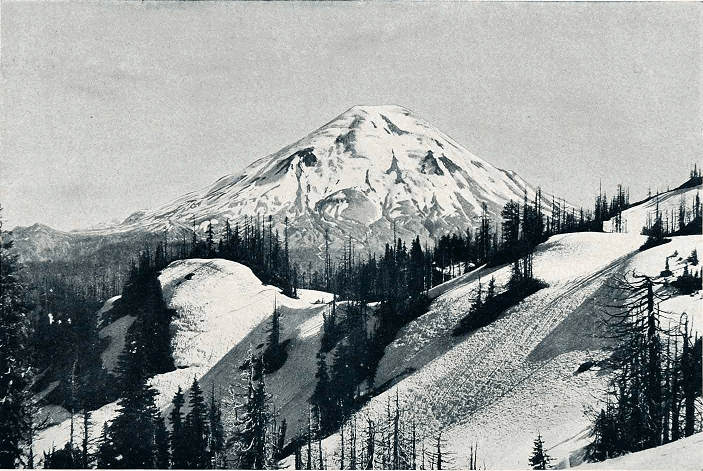
 It was an isolated event. As an oddity, it earned mention in various papers over the country, the above account taken from The Chronicle of Wilksboro, North Carolina, on 5 February 1902.
It was an isolated event. As an oddity, it earned mention in various papers over the country, the above account taken from The Chronicle of Wilksboro, North Carolina, on 5 February 1902.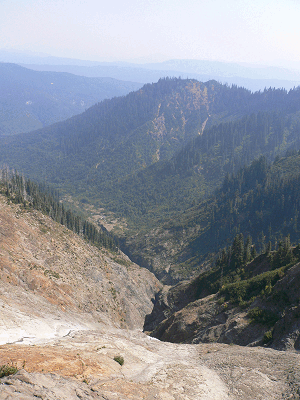 night by rock bombardments of the beasts.”
night by rock bombardments of the beasts.”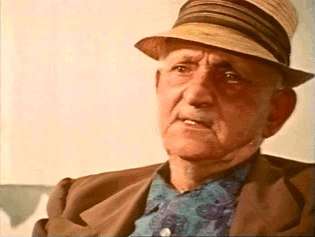 still alive in the 1960s. He spoke with Bigfooters. He described the “Mountain Devils” as gorilla-like but quite different than any cone-headed Bigfoot. They were big, he had declared. He thought they were close to 8 feet tall, hairy all over, the color of “black turned brown by the sun;” they had visible ears, beards, thick, broad chests and narrow hips. They were muscular.
still alive in the 1960s. He spoke with Bigfooters. He described the “Mountain Devils” as gorilla-like but quite different than any cone-headed Bigfoot. They were big, he had declared. He thought they were close to 8 feet tall, hairy all over, the color of “black turned brown by the sun;” they had visible ears, beards, thick, broad chests and narrow hips. They were muscular.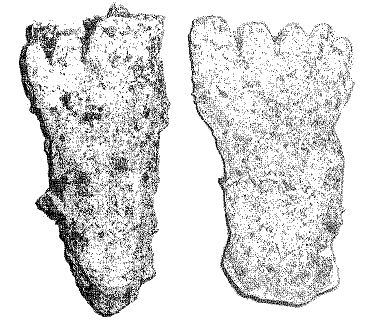 one of the early, key Bigfooters, expressed his surprise at seeing casts of such prints taken in Manitoba in 1988 by the Royal Canadian Mounted Police.
one of the early, key Bigfooters, expressed his surprise at seeing casts of such prints taken in Manitoba in 1988 by the Royal Canadian Mounted Police.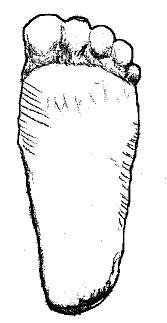 giant from the Patterson Film. This “Patterson Bigfoot,” like all other footprint casts up to the time of that film (1967) and thereafter, sported some odd foot that was like a comical human foot with 5 toes.
giant from the Patterson Film. This “Patterson Bigfoot,” like all other footprint casts up to the time of that film (1967) and thereafter, sported some odd foot that was like a comical human foot with 5 toes.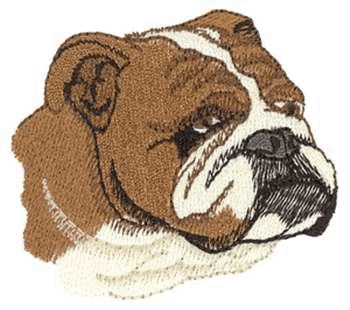 being accepted one day as having been a real native American anthropoid.
being accepted one day as having been a real native American anthropoid. 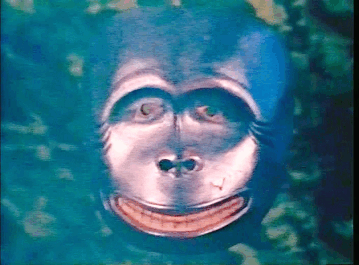 noteworthy for also reproducing the features of a bulldog’s head, that is, a cleft in the skull.
noteworthy for also reproducing the features of a bulldog’s head, that is, a cleft in the skull. 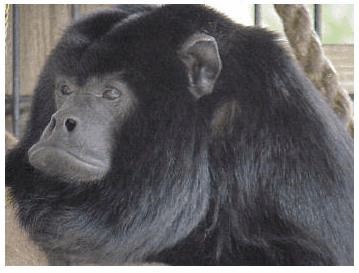 humans. Since Morgan confined himself to around Mount St. Helens he has to be referring to the Skoocum.
humans. Since Morgan confined himself to around Mount St. Helens he has to be referring to the Skoocum.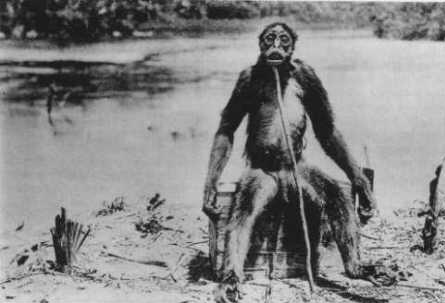
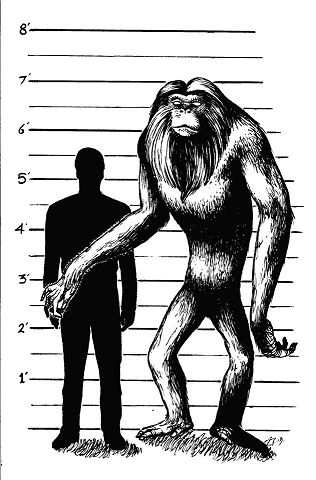
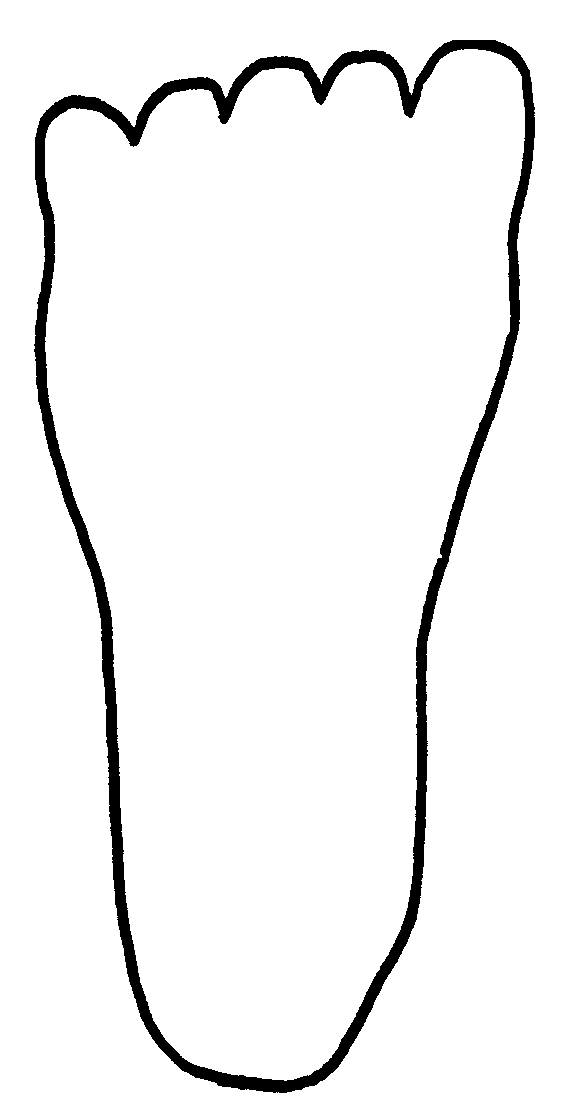 seem to be the same thing and collectively in turn this is BIGFOOT. Potentially it is a native American anthropoid. Presumably, it is the one with 4-toes. The problem is that unless the consistent reports of 4 toed prints were always wrong, the “human monster” and Sasquatch cannot be the same thing. The Ruby Creek Print traced by Joe Dunn in 1941 is that of an elongated but 5-toed humanoid foot.
seem to be the same thing and collectively in turn this is BIGFOOT. Potentially it is a native American anthropoid. Presumably, it is the one with 4-toes. The problem is that unless the consistent reports of 4 toed prints were always wrong, the “human monster” and Sasquatch cannot be the same thing. The Ruby Creek Print traced by Joe Dunn in 1941 is that of an elongated but 5-toed humanoid foot.